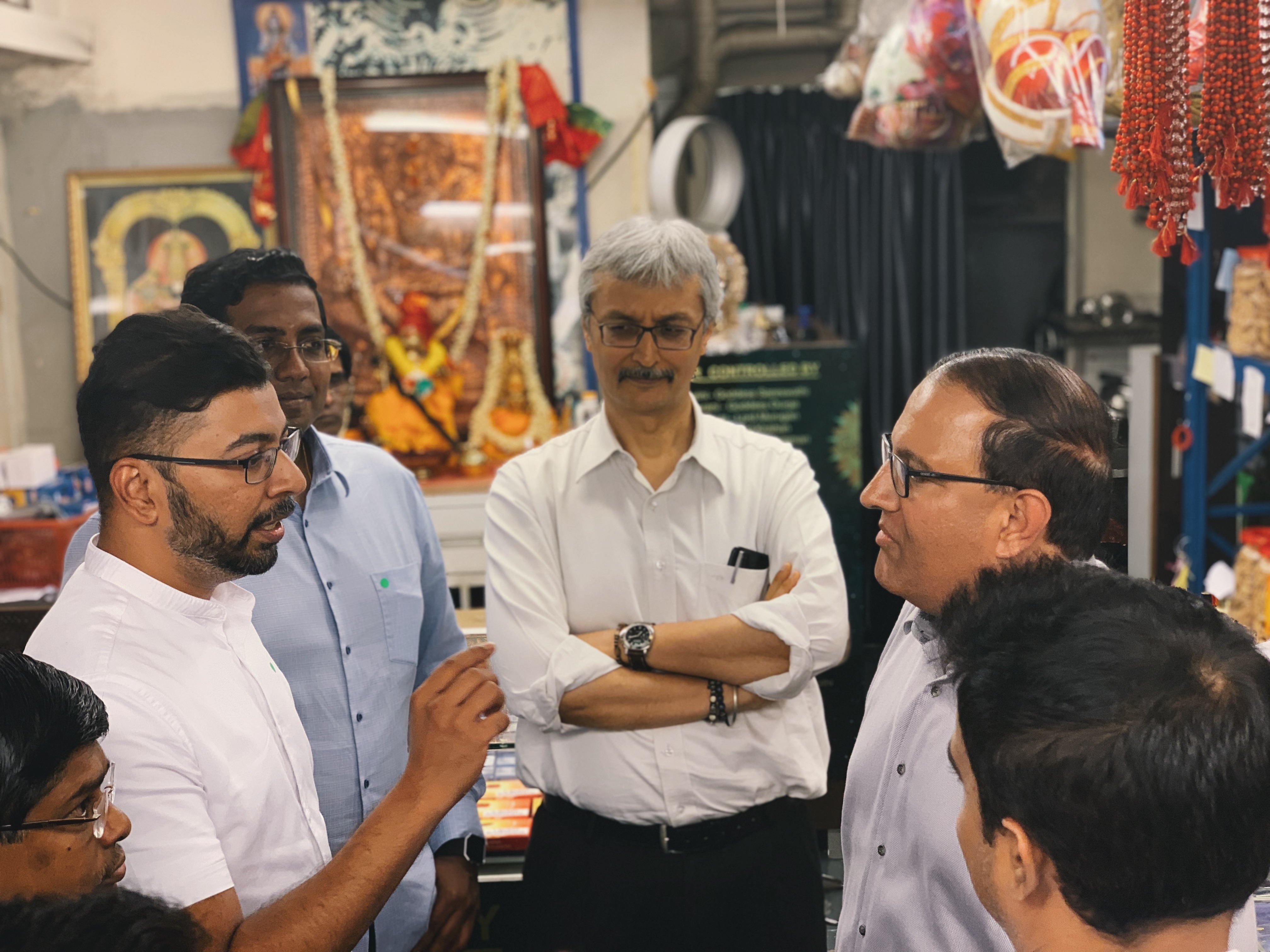Small and Medium Enterprises (SMEs) received a major boost from the Singapore Indian Chamber of Commerce (SICCI) which has decided to decentralised its support by opening SME Centres in the heart of Little India – an ethnic quarter which is abuzz with commercial activity.
Led by SME Centre@Little India, SICCI and the Little India Shopkeepers and Heritage Association (LISHA), the project was supported by the Infocomm Media Development Authority (IMDA) and Enterprise Singapore (ESG).
The SME Centre@Little India, which provides access to and expertise on grants made available by the government, opened a year ago. On Monday, October 7, Minister for Communications and Information S Iswaran took stock of the centre’s achievements with inputs from SICCI, LISHA and the merchants within the precinct.
“SME Centre@Little India has been working very closely with our partners IMDA, LISHA and ESG to survey the needs of Little India merchants,” said Dr T Chandroo, Chairman, SICCI and SME Centre@Little India. “We encourage more SMEs to start their digital journey and empower themselves with tools that can help them track their inventory better, manage their cashflow and increase their revenue.”
The owner of Jothi’s Traditional Charm, Banumathi M Pasupathy is one such SME businessperson who is embracing digitalisation in order to stay ahead of market changes, having seen how rapidly consumer patterns evolve. The well-known beauty salon in Little India, established in 2008, hopped onto the digitalisation platform to adopt e-payment modes SCash and FavePay.
Pasupathy also took advantage of the business advisory services at SME Centre@Little India which recommended that she incorporates operational systems such as Point of Sales, Customer Relationship Management and Inventory Management to enhance efficiency at the salon.
Gokulam Jewels & Crafts is another among the 100 Little India merchants who have adopted digital solutions to improve their competitiveness in the digital economy.
Established in 1991, Gokulam is one of the biggest Indian handicraft stores in Singapore. Their traditional operations and processes had brought about issues in inventory management, and a lack of sales and customer data.
Through the adoption of digital technologies, the store was able to streamline their business process. They could also view realtime inventory updates on a cloud server with mobile sales tracking from anywhere. A client database was also set up to enable easier access for tracking and marketing purposes.
“Digitalisation in the era of technology-driven market is most crucial for the merchants of our Little India precinct to exploit,” said Rajakumar Chandra, Chairman of LISHA. “Our unique Little India precinct with phenomenal footfall will gain favourable propensity in business and tourism in this new dimension of technology.”
In February 2018, Minister Iswaran had launched the Little India transformation journey, aimed at using technology to deliver a better visitor experience. Focussing on two key areas, e-commerce and e-payment, to help merchants improve customer engagement and strengthen digital capabilities.
A little over a year later, merchants in the precinct are already reaping the benefits of these digital solutions. For instance, Pasupathy observed an overall 20 percent increase in revenue since the adoption of FavePay due to an increased customer footfall in her shop.
On Monday Minister Iswaran visited selected merchants during a walkabout of Little India to learn more about their digitalisation journeys so far, the challenges they have faced, and their plans moving forward.
Below are a few glimpses of Iswaran’s interactions with various SME business owners at Little India:











